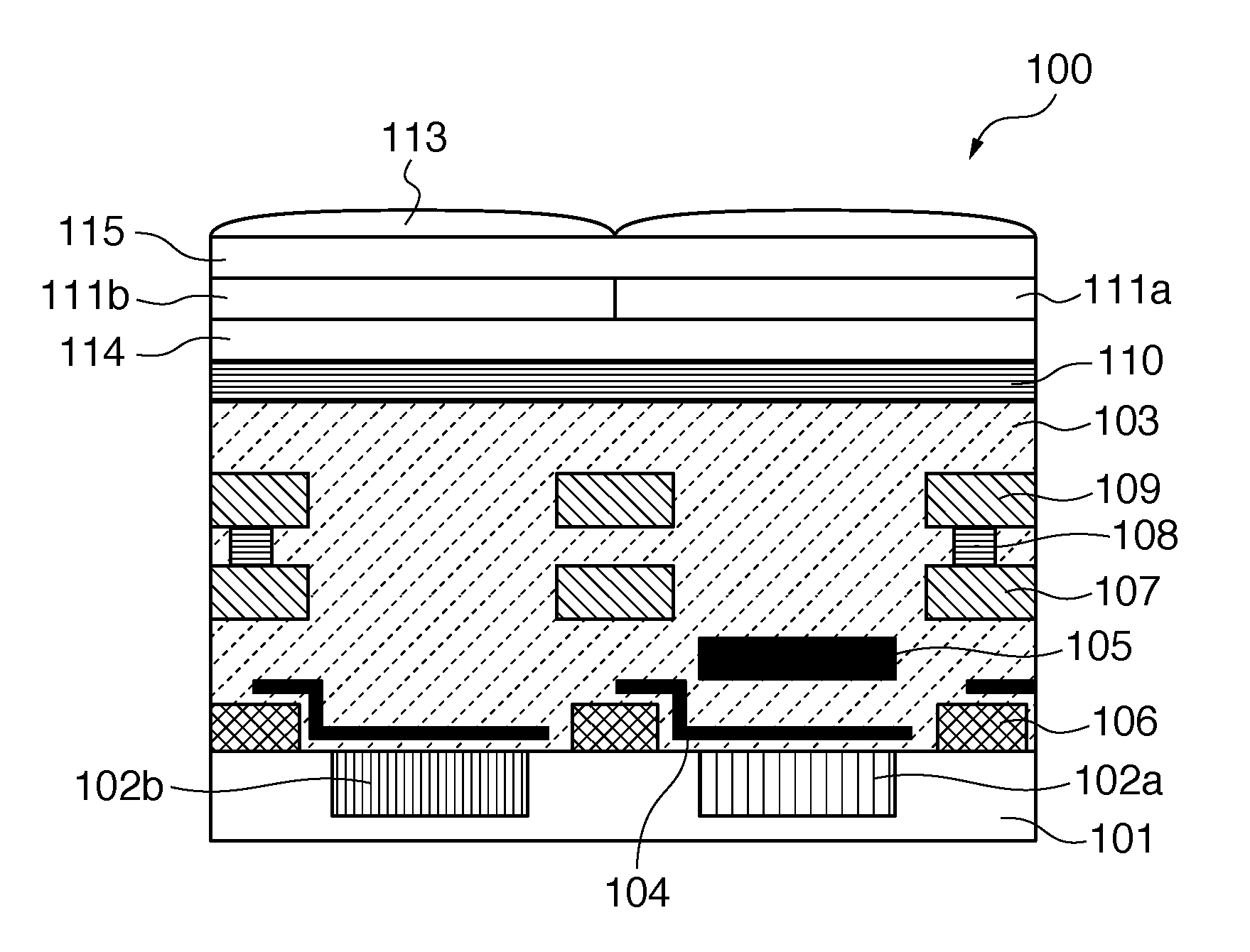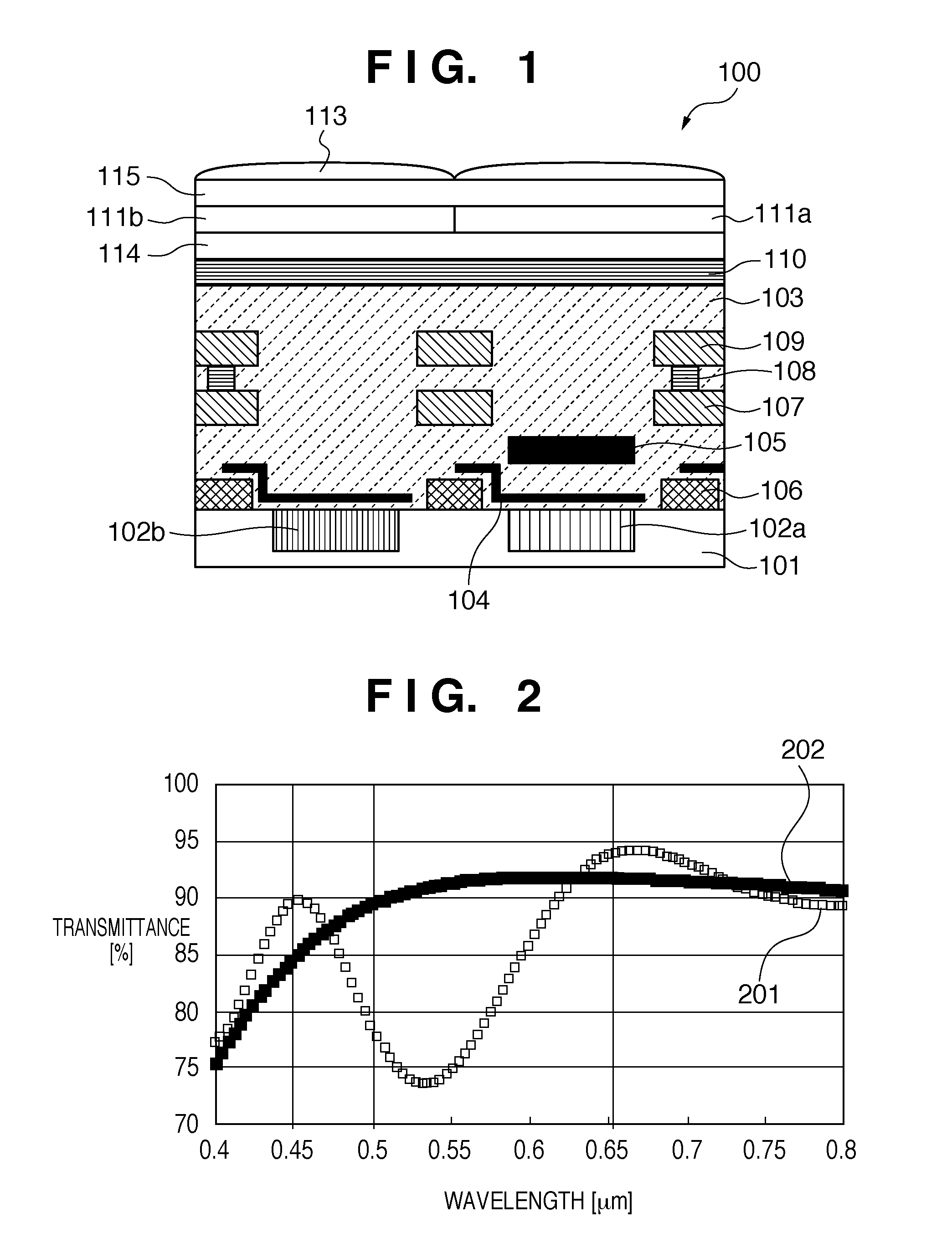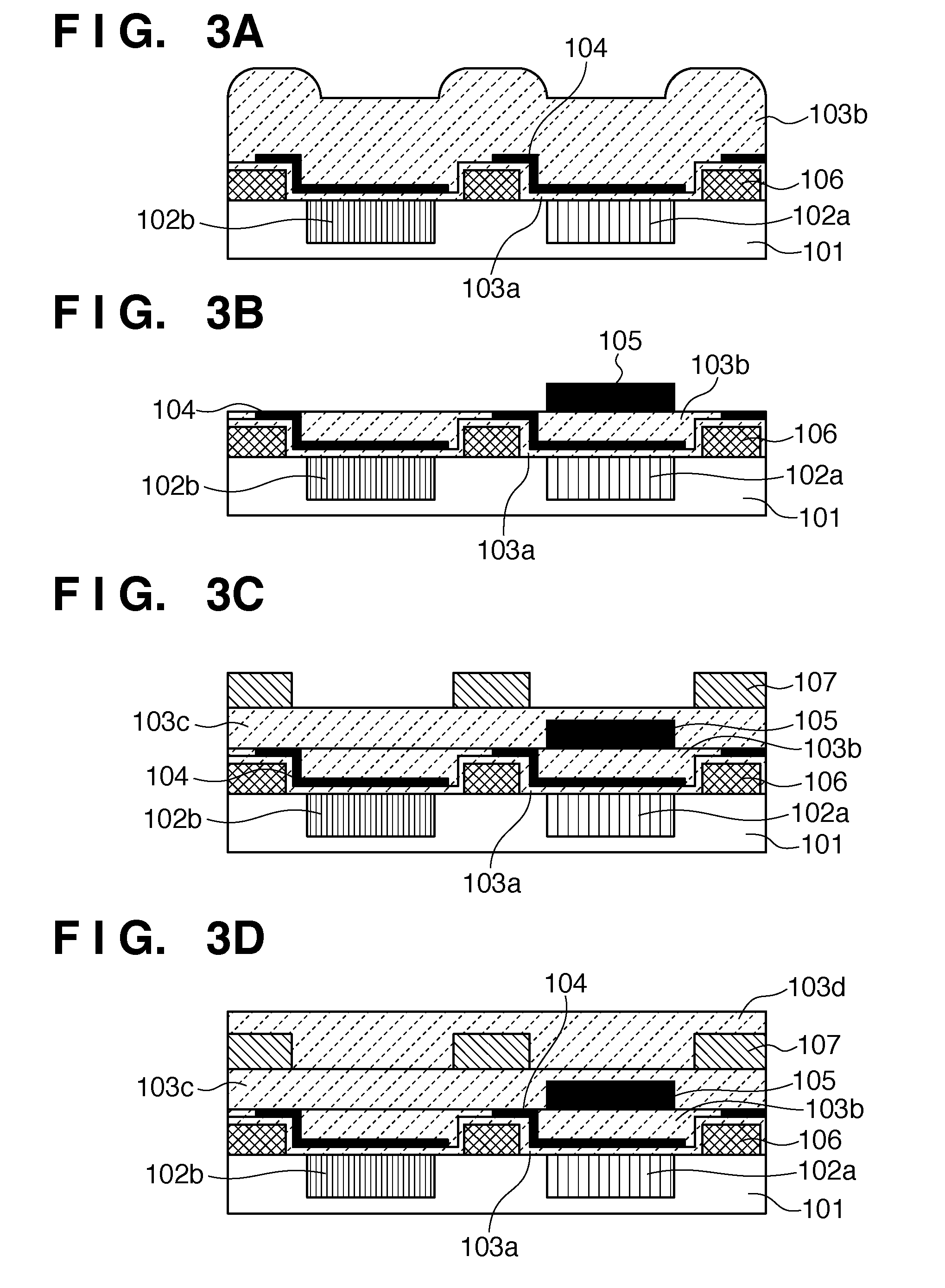Solid-state image sensing device
- Summary
- Abstract
- Description
- Claims
- Application Information
AI Technical Summary
Benefits of technology
Problems solved by technology
Method used
Image
Examples
Embodiment Construction
[0013]Preferred embodiments of the present invention will be described below with reference to the accompanying drawings. FIG. 1 is a sectional view showing part of an exemplary solid-state image sensing device 100 according to an embodiment of the present invention. In the solid-state image sensing device 100, light-receiving regions 102a and 102b where incident light is photoelectrically converted are formed in a semiconductor substrate 101 made of silicon or the like. The light-receiving region 102a is for a blue pixel, and the light-receiving region 102b is for a green pixel. A light-receiving region for a red pixel has the same structure as that of the light-receiving region 102a and thus is not shown. The light-receiving region 102a receives the blue component of light entering the solid-state image sensing device 100 through a color filter 111a which transmits blue light. The light-receiving region 102b receives the green component of light entering the solid-state image sens...
PUM
 Login to View More
Login to View More Abstract
Description
Claims
Application Information
 Login to View More
Login to View More - R&D
- Intellectual Property
- Life Sciences
- Materials
- Tech Scout
- Unparalleled Data Quality
- Higher Quality Content
- 60% Fewer Hallucinations
Browse by: Latest US Patents, China's latest patents, Technical Efficacy Thesaurus, Application Domain, Technology Topic, Popular Technical Reports.
© 2025 PatSnap. All rights reserved.Legal|Privacy policy|Modern Slavery Act Transparency Statement|Sitemap|About US| Contact US: help@patsnap.com



